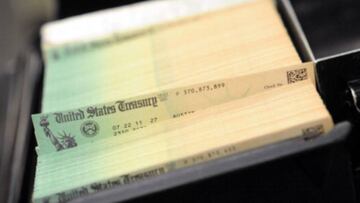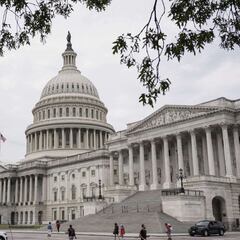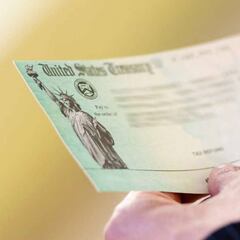How have stimulus checks helped Americans’ cash reserves?
The three rounds of direct payments distributed during the pandemic have provided vital short-term relief for tens of millions of households.


Throughout the pandemic the three rounds of stimulus checks have been amongst the most important, and most expensive, forms of financial support provided by the federal government. By May 2021 the IRS had sent out over $850 billion worth of stimulus checks to eligible taxpayers.
The entitlement on offer for each household depended on their adjusted gross income, with low- and middle-earners getting the majority of the support. The Peter G. Peterson Foundation found that roughly 92% of households earning less than $75,000 got the Economic Impact Payments, also known as the stimulus checks, compared to just 50% of households earning over $150,000.
Read more
- Why hasn't the White House extended the eviction moratorium?
- What is in the new infrastructure package?
With most support going to those least likely to have considerable savings, the Center for Retirement Research at Boston College have looked into the affect that the cash infusion has had on Americans’ cash reserves.
Stimulus checks did provide a boost for household savings
The three rounds of stimulus checks have been worth a maximum of $3,200 per individual filer; $6,400 per married couple; and up to $2,500 for each qualified dependent. This means that an average sized household could easily have received in excess of $10,000 from the three payments, enough to dramatically alter their financial situation.
The researchers from Boston College used the Survey of Household Economics and Decision-making annual surveys to establish how stimulus checks have altered households’ financial stability. They found that, amongst respondents who kept their jobs during the pandemic, the proportion who would struggle to cover a $400 expense had fallen from 41% in 2019, to 33%, 31% and 37% at different points in 2020.
What stimulus checks meant for the American people:
— Bernie Sanders (@BernieSanders) June 4, 2021
⬇️ financial instability fell by 43%
⬇️ families' food shortages fell by 42%
⬇️ anxiety and depression fell by 20%
Yes. Government can and should continue to address the needs of working people, not just the 1%.
How have the three stimulus checks been spent by recipients?
The cash influx has clearly had a positive impact on families’ finances, but when taken separately it’s clear to see that each round of payments was used differently.
They found that the first round of $1,200 stimulus checks was mostly spent: 62% of those who kept their job spent it with 81% of those who had lost their job doing the same. By the second stimulus check those figures had dropped to 27% and 24% respectively. They fell again for the third stimulus check as little over one-in-five Americans opted to spend the money.
Related stories
As the proportion spent falls the amount of people choosing to save or to pay off debt with their stimulus checks has risen, leading to the current position with greater financial stability across the United States.
However in response to these findings, the Center for Retirement Research report states: “The question is how long these favourable balance sheet developments will last.”

